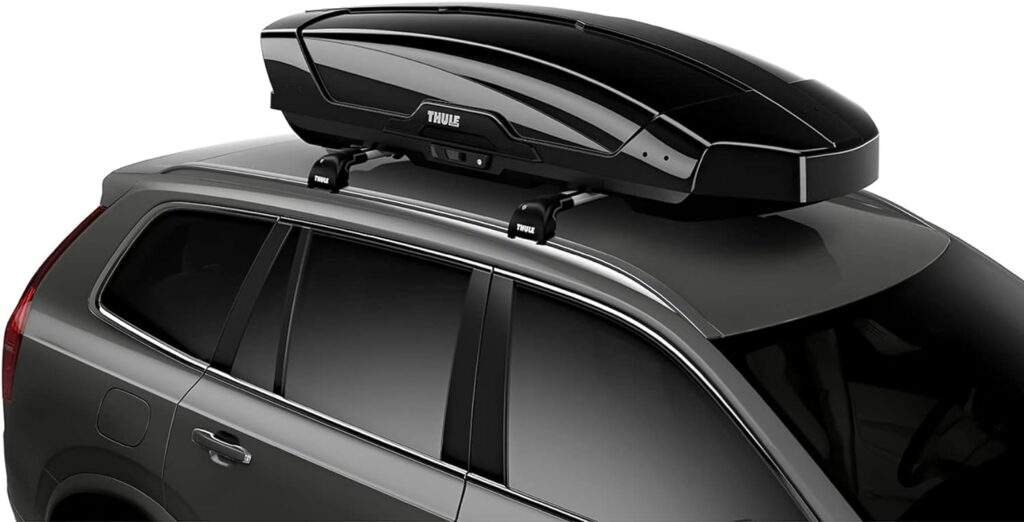Unveiling the Secrets to Basting Bliss: Choosing the Best Basting Brush
Ah, the humble basting brush. This unsung hero of the kitchen elevates everything from perfectly glazed salmon to flaky, golden pastries. But with a variety of options available, choosing the best basting brush can feel overwhelming. Fear not, fellow food enthusiasts! This guide will navigate you through the key features to consider, ensuring you select the perfect brush to unleash your inner basting champion.
Table of Contents
Bristle Material: The Heart of Your Basting Brush
The type of bristles on your best basting brush significantly impacts its performance and longevity. Here’s a breakdown of the most common materials:
- Natural Boar Bristles:
- Pros: These bristles excel at holding sauce, ensuring even and flavorful basting. They’re also gentle on delicate foods.
- Cons: Boar bristles can shed, especially with new brushes. They also require more care and are not heat-resistant.

- Silicone Bristles:
- Pros: Silicone is a heat-resistant and non-stick winner. It’s easy to clean and doesn’t shed.
- Cons: Silicone bristles may not hold as much sauce as boar bristles, requiring more frequent dips. They can also feel slightly stiff when basting delicate foods.

- Nylon Bristles:
- Pros: The most affordable option, nylon bristles are readily available.
- Cons: Not ideal for high heat cooking as they can melt. Nylon bristles may also be less effective at holding sauce compared to other options.
Choosing the Right Bristle:
- For even basting and a gentle touch, natural boar bristles are a great choice, especially for delicate foods.
- If heat resistance and easy cleaning are your priorities, silicone reigns supreme.
- For occasional use or a budget-friendly option, nylon bristles can suffice, but be mindful of heat limitations.
Here Are The Best Selling Basting Brush Products on Amazon to Consider:
| Image | Product | Details | Price |
|---|---|---|---|
| Kitchen Mama Silicone Basting Pastry Brush | Material: Silicone Color: Metal Grey Brand: Kitchen Mama Product Dimensions: 10.24″L x 1.77″W Item Weight: 0.25 Pounds | Check Price | |
| HOTEC Basting Brushes Silicone Heat Resistant Pastry Brushes | Material: Silicone Color: Black 2 Brand: Hotec Product Dimensions: 10.3″L x 1.7″W Handle Material: Silicone,Stainless Steel | Check Price | |
| Traeger Grills BAC418 Silicone Basting Brush | Material: Silicone Color: Brown/A Brand: Traeger Item Weight: 0.21 Pounds Handle Material: Silicone | Check Price | |
| Silicone Pastry Brush for Baking | Material: Alloy Steel, Silicone Brand: ORYVID Product Dimensions: 10.3″L x 1.7″W Handle Material: Silicone Is Dishwasher Safe: Yes | Check Price | |
| Anaeat High Heat Resistant Silicone Basting Pastry Brush | Material: Silicone Color: Red Set of 2 (10″+8″) Brand: Anaeat Handle Material: Silicone Is Dishwasher Safe: Yes | Check Price |
Bristle Shape: Selecting the Perfect Brushstroke
The shape of your best basting brush’s bristles plays a crucial role in how you apply sauce and navigate different foods. Here are the main types to consider:
- Flat Bristles:
- Ideal for even basting across large, flat surfaces like chicken breasts, fish fillets, or pizzas.

- Angled Bristles:
- These angled warriors excel at reaching corners and crevices. Perfect for basting ribs, applying sauce to vegetables in a roasting pan, or glazing delicate pastries.
- Round Bristles:
- Soft and gentle, round bristles are ideal for delicate tasks like brushing egg wash on pastries or applying sauces to intricate desserts.
Choosing Your Bristle Shape Champion:
- For general basting of large surfaces, a flat bristle brush is your best bet.
- Angled bristles are lifesavers when it comes to reaching nooks and crannies.
- If pastry perfection is your goal, a round bristle brush is the delicate touch you need.
Heat Resistance: Conquering the Flames with Your Best Basting Brush
When grilling meats or searing vegetables, heat resistance becomes a critical factor in choosing the best basting brush. Here’s why:
- Bristle Meltdown: Exposure to high heat can melt some brush bristles, contaminating your food and rendering the brush unusable.
- Safety Concerns: Melted bristles can also stick to hot grills or pans, posing a potential burn hazard.
Heat Resistance Ratings:
- Natural boar bristles: Generally not heat resistant and can singe at high temperatures.
- Silicone bristles: These champions can withstand high heat, typically ranging from 400°F (200°C) to even 600°F (315°C). Perfect for grilling and oven basting.
- Nylon bristles: While some nylon bristles claim heat resistance, it’s generally lower than silicone. Be cautious when using them with high heat.
Choosing the Heat Resistant Hero:
- For high-heat cooking like grilling or searing, prioritize silicone bristles for safety and performance.
- If your primary use is for lower-heat basting, boar bristles or heat-resistant nylon options can be considered.

Handle Length: Reaching for Basting Glory with Your Best Basting Brush
The handle length of your best basting brush is all about comfort and safety when navigating hot environments. Here’s what to consider:
- Safety First: Longer handles keep your hands further away from heat sources like grills or ovens, minimizing the risk of burns.
- Precision vs. Maneuverability:
- Short handles offer greater control and precision, ideal for tasks like glazing pastries or applying delicate sauces.
- Long handles provide better leverage and maneuverability, making them perfect for basting large roasts or grilling at a distance.
Choosing Your Handle Length Champion:
- For safety with high-heat cooking (grilling, searing), prioritize a long handle.
- If delicate work or pastry applications are your focus, a shorter handle offers more control.
- Consider a brush with a medium-length handle for versatility in most basting tasks.
Ease of Cleaning: Maintaining Your Best Basting Brush for Basting Bliss
Nobody enjoys spending ages scrubbing a greasy brush. When choosing the best basting brush, consider how easy it will be to keep clean:
- Silicone Reigns Supreme: Silicone bristles are the undisputed champions of cleaning. They’re non-stick, so sauce wipes right off, and they’re usually dishwasher-safe for effortless cleaning.
- Natural Bristles Require TLC: Boar bristles require more careful cleaning. Handwash them with warm, soapy water and avoid soaking to prevent the ferrule (metal ring holding bristles) from loosening.
- Nylon Can Be Fickle: Nylon bristles can be trickier to clean, especially if they harbor stuck-on food particles. Handwashing with warm, soapy water is recommended.
Choosing Your Cleaning Champion:
- For the ultimate ease of cleaning, prioritize silicone bristles.
- If you’re willing to put in a little more effort, natural boar bristles can be a good option.
- Nylon bristles are the least convenient to clean, so consider this factor if cleaning time is a priority.
Durability: Ensuring Your Best Basting Brush Stands the Test of Time
A quality basting brush should be a reliable kitchen companion for years to come. Here’s a breakdown of how bristle and handle materials impact durability:
- Bristle Resilience:
- Silicone bristles are generally very durable and resistant to fraying or splitting.
- Natural boar bristles can become brittle over time, especially with frequent use and improper care.
- Nylon bristles may fray or become misshapen with regular use.
- Handle Strength:
- Silicone handles are flexible and heat-resistant, but can be susceptible to cuts or tears if snagged.
- Plastic handles are lightweight and affordable, but may crack or break if dropped.
- Wood handles offer a classic look and good durability, but can loosen or warp over time if not properly cared for.
Choosing Your Durable Champion:
- For long-lasting performance, prioritize silicone bristles and a sturdy handle material like silicone or wood.
- If budget is a concern, consider a plastic handle, but be mindful of potential breakage.

Versatility: Expanding Your Culinary Horizons with the Best Basting Brush
Does your ideal basting brush conquer both savory and sweet tasks? Versatility is key for maximizing the use of your brush. Here’s how bristle type and shape influence this:
- Bristle Material:
- Silicone bristles are generally versatile due to their heat resistance and ease of cleaning. They can handle both high-heat basting and delicate pastry applications.
- Natural boar bristles excel at holding sauce for savory basting, but their lower heat resistance limits their use with grilling or searing.
- Nylon bristles are the least versatile due to lower heat tolerance and potential for shedding.
- Bristle Shape:
- Flat bristles are great for general basting of large surfaces but may not reach crevices.
- Angled bristles offer superior versatility, tackling nooks and crannies for both savory and sweet applications.
- Round bristles are ideal for delicate pastry work but may not hold enough sauce for some savory basting tasks.
Choosing Your Versatile Champion:
- For maximum versatility, a silicone brush with angled bristles is a great choice. It can handle high heat, clean easily, and navigate various shapes for both savory and sweet applications.
- If heat resistance isn’t a major concern and you prioritize delicate work, a natural boar bristle brush with round bristles can be a good option for pastries and lower-heat basting.
Brand Reputation: Choosing a Trustworthy Companion for Your Best Basting Brush
While brand shouldn’t be the sole deciding factor, considering a brush’s origin can provide valuable insight into its quality. Here’s how brand reputation can influence your choice of the best basting brush:
- Established Kitchenware Brands: Reputable kitchenware brands are known for using high-quality materials and adhering to strict manufacturing standards. This translates to a brush that’s likely to be durable, safe, and perform well. Look for brands with a history of producing reliable cooking tools.
- Transparency and Customer Reviews: Do some research! Check the brand’s website and reviews from other customers to see if they stand behind their products and offer helpful information about care and use. Positive customer experiences can indicate a brush that lives up to its claims.
Choosing a Reputable Brand:
- Prioritize established kitchenware brands known for quality and customer satisfaction.
- Look for brands that offer clear information about materials, manufacturing, and care instructions.
- Read customer reviews to gain insights into real-life experiences with the brand’s basting brushes.
Price: Finding the Perfect Value in Your Best Basting Brush
The price of your best basting brush can range from a few dollars to over twenty, depending on factors like material, brand, and features. Here’s how to strike a balance between affordability and quality:
- Prioritize Needs Over Price: Don’t be swayed by the most expensive brush. Identify your cooking needs and prioritize features that matter most to you (heat resistance, bristle type, etc.).
- Material Matters: Silicone brushes tend to be more expensive than nylon, but they offer greater durability, heat resistance, and ease of cleaning. Consider the long-term value proposition.
- Brands Offer Value: Established brands may command a slightly higher price, but they often ensure quality materials and construction.
Finding Your Price Champion:
- Set a budget that aligns with your cooking needs and frequency.
- Don’t be afraid to explore lesser-known brands with good reviews if they offer the features you require at a competitive price.
- Remember, the most expensive brush isn’t always the best. Choose the one that delivers the best value for your specific needs.
Bonus Features: Unveiling Hidden Gems in Your Best Basting Brush
While core functionality is key, some best basting brushes boast additional features that can elevate your basting experience:
- Drip Tray: This handy attachment catches excess sauce drips, keeping your countertops clean and preventing unwanted pooling around your food.
- Built-in Scraper: This ingenious feature allows you to scrape off stubborn marinade or sauce residue from your pan directly with the brush, eliminating the need for a separate utensil.
- Bristle Protectors: Some brushes come with a protective cover to keep the bristles clean and prevent them from bending or losing their shape during storage.
- Ergonomic Handle Design: A comfortable, well-gripped handle can make all the difference, especially during extended basting sessions.






























Comments are closed.